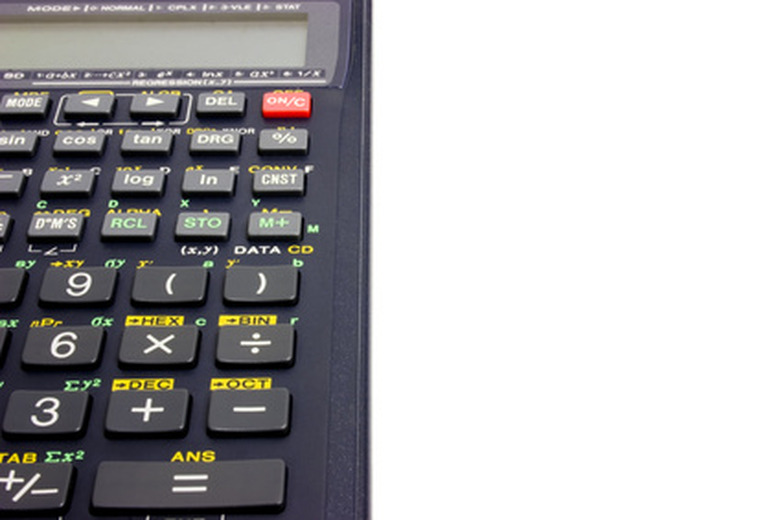How To Solve Exponents Without A Calculator
Mathematics is a dreaded subject for many students throughout their school years. With graphs, complex equations and many different shapes involved, it is no wonder that mathematics can seem quite intimidating. Solving exponents might be one such intimidating math problem. Learn how to solve this math problem without a calculator.
Step 1
Begin by looking at the equation you have to solve. Take note of the base number and the exponent number. If the exponent is merely part of a larger equation, take the time to look that over as well. The base number is usually the larger number and the exponent is usually smaller in size than the base number; the exponent appears up and to the right of the base number.
Step 2
Take the exponent number as telling you how many base numbers to write out on your piece of paper. So, if your exponent number is 3, then you will want to write 3 of your base number out on a single line.
Step 3
Write a multiplication sign between each of the base numbers that you have just written. An exponent is a number being multiplied by itself a certain number of times, and this is what you are representing when you write the multiplication signs between base numbers.
Step 4
Multiply out your new equation. So, for example, this is how you would solve 6^3 without a calculator, from start to finish. Write: 6 6 6, because the base number is 6 and the exponent is 3. Then write: 6 x 6 x 6, to place multiplication signs between each of the base numbers. After that, multiply out the first multiplication sign, or 6 x 6 = 36. Then, multiply out the final multiplication sign to get 36 x 6 = 216. So, the answer to this is that 6^3 = 216.
TL;DR (Too Long; Didn't Read)
For negative exponents, follow the steps above and then at the end divide 1 by your answer to get your final answer.
Zero exponents are always 1, as long as the base is not zero, and it is best to commit this to memory.
If a problem asks you to multiply two exponents with the same base, simply add the two exponent numbers, keep the base the same, and then follow the steps above to solve the problem. For example, (3^2) x (3^4) = 3^6.
Your answer is going to grow at a quick rate, so don't feel as if your answer is wrong simply because it is growing so fast.
Cite This Article
MLA
Patterson, Ainsley. "How To Solve Exponents Without A Calculator" sciencing.com, https://www.sciencing.com/solve-exponents-calculator-4461247/. 24 April 2017.
APA
Patterson, Ainsley. (2017, April 24). How To Solve Exponents Without A Calculator. sciencing.com. Retrieved from https://www.sciencing.com/solve-exponents-calculator-4461247/
Chicago
Patterson, Ainsley. How To Solve Exponents Without A Calculator last modified August 30, 2022. https://www.sciencing.com/solve-exponents-calculator-4461247/
